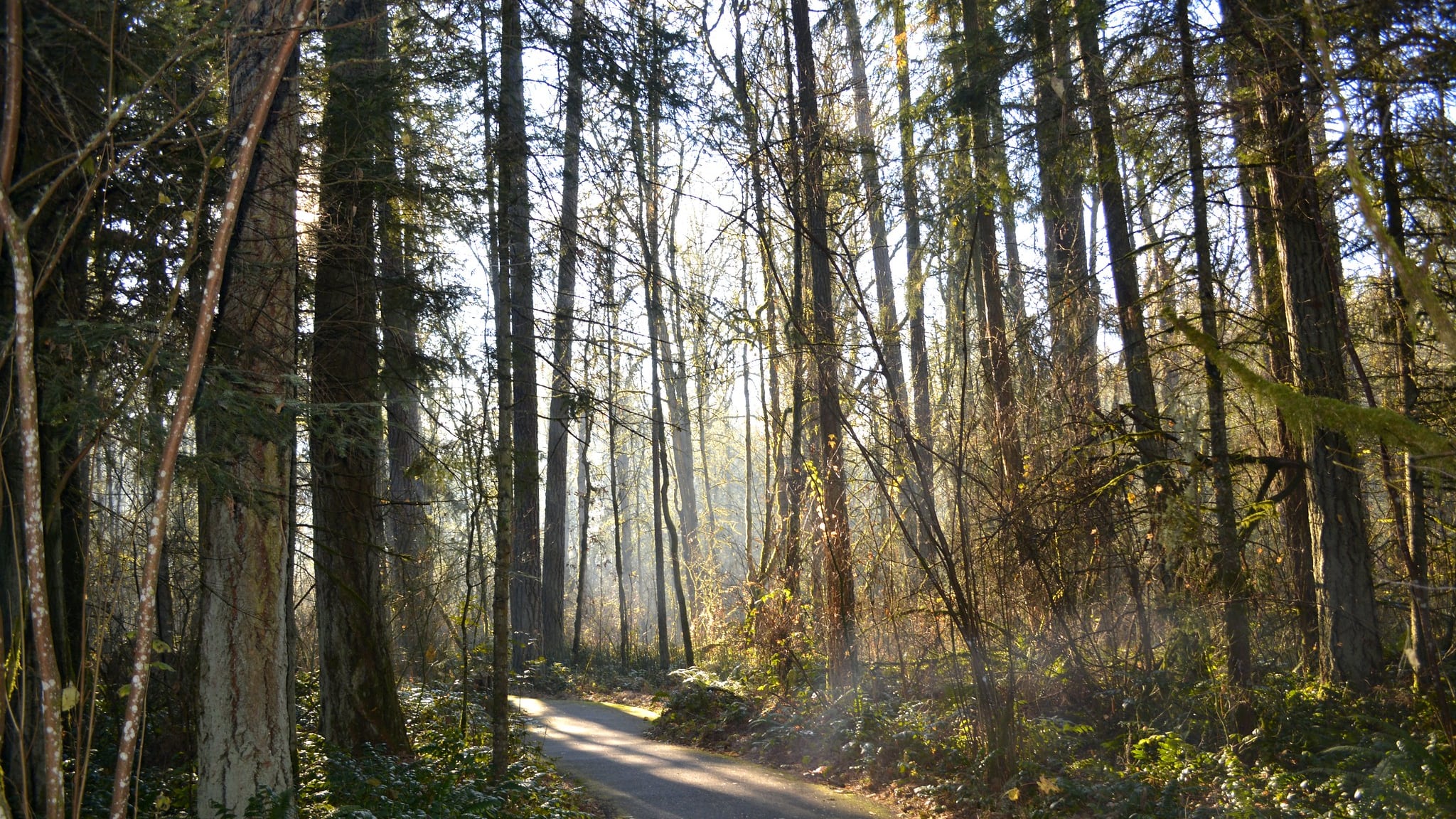Distance: About 4.5 miles to see most of the park.
Difficulty: ☀ out of ☀☀☀☀
Drive time from Portland: Approximately 20 minutes in the car or 40 minutes on MAX from downtown.
Directions: Head out on Highway 26 west for roughly 6.5 miles before taking exit 67 for Murray Boulevard, then turn left onto Northwest Murray Boulevard. After a little more than 2 miles, turn right onto Southwest Millikan Way. Continue for about half a mile and make one more right into the Tualatin Hills Nature Park. If you use MAX, take the Blue Line west to the Beaverton Creek stop, then walk southwest to Southwest 153rd Drive, turning left on Southwest 154th Terrace. Continue until you reach Southwest Millikan Way and turn right. Follow driving directions from there to reach the parking lot.
Restroom availability: Multiple flush restrooms are located at the trailhead and inside the Tualatin Hills Nature Center.
A shorter version of this story appeared as part of Oregon Summer, our annual free magazine out now all over Portland.
Portlanders seeking sanctuary in nature who don’t want to drive out of town naturally turn to Forest Park, one of the largest urban woods in the country. While nowhere near as large, Tualatin Hills Nature Park is the close-in green retreat of choice for westsiders, which is arguably easier to get to since it’s just a short walk from the MAX line.
This 222-acre wildlife preserve offers nearly 5 miles of trails, all of which can be tackled in less than two hours. You could easily cobble together a much shorter route, however, exploring the entire northern perimeter, along with a series of four loops on the south side, allows you to take in all of the diverse terrain, which includes forests, marshes, grassland, two creeks and several ponds.
From the Beaverton Creek MAX stop, resist the urge to walk north directly into a wooded area with a fleet of sleek black Biketown cycles waiting for riders. Despite the welcoming appearance of the paved path, that area is not Tualatin Hills. Instead, head southwest through a different kind of park—one where you can spot Nike corporate office workers in their natural habitat—until you hit Southwest Millikan Way, turning right to reach the parking lot and visitor center.
There’s a good reason why the kiosk near the restrooms is well stocked with maps: It’s easy to get a bit turned around in this network of trails and boardwalks, even though junctions are all well marked, because there are so many different options. Grab one of the brochures as a form of assistance in case you end up getting lost or to use it to chart your progress, then set out on the Vine Maple Trail—the main artery through the center of the park.
At the first intersection, veer right onto the Oak Trail and continue to circle around the property counterclockwise. Many of the paths here are named after the flora they meander through (a helpful identifier for anyone who’s a lousy botanist), including soaring old firs, wetland-loving ash trees whose roots are often submerged after hard rains, rare west-of-the-Cascades ponderosas and blooming trilliums in spring. As you explore the northern edge of the park—using the Oak Trail to connect to the Old Wagon Trail—you’ll also encounter some non-natural yet still interesting sights, like TriMet’s Merlo bus barn.
To reach the sequence of loops to the south, follow the Old Wagon Trail’s leftward bend through a thicket of two different types of Oregon grape and past a lily pond (though take the short spur to the pad-filled bowl, which could be filled with water in spring or parched by summer’s end). You’ll then reunite with the Vine Maple Trail that connects to the Elliot Path after less than a half-mile. Take that right, where there are trees pockmarked by both woodpecker holes and beetle burrows, and then go right again at the Big Fir Trail. That will bring you to the named loops (Chickadee, Ash, Trillium and Ponderosa) bordering a particularly mellow segment of Beaverton Creek. The last one links back up to the Vine Maple Trail, just a short jaunt from the parking lot.
Along the route, always keep an eye out for squirrels, chipmunks, newts, deer, fuzzy orange-and-black woolly bear caterpillars (an undeniably cute critter) and more. You can then record your sightings on a white board back at the Nature Center and compare the success of your visual hunt to those of other visitors that day.
